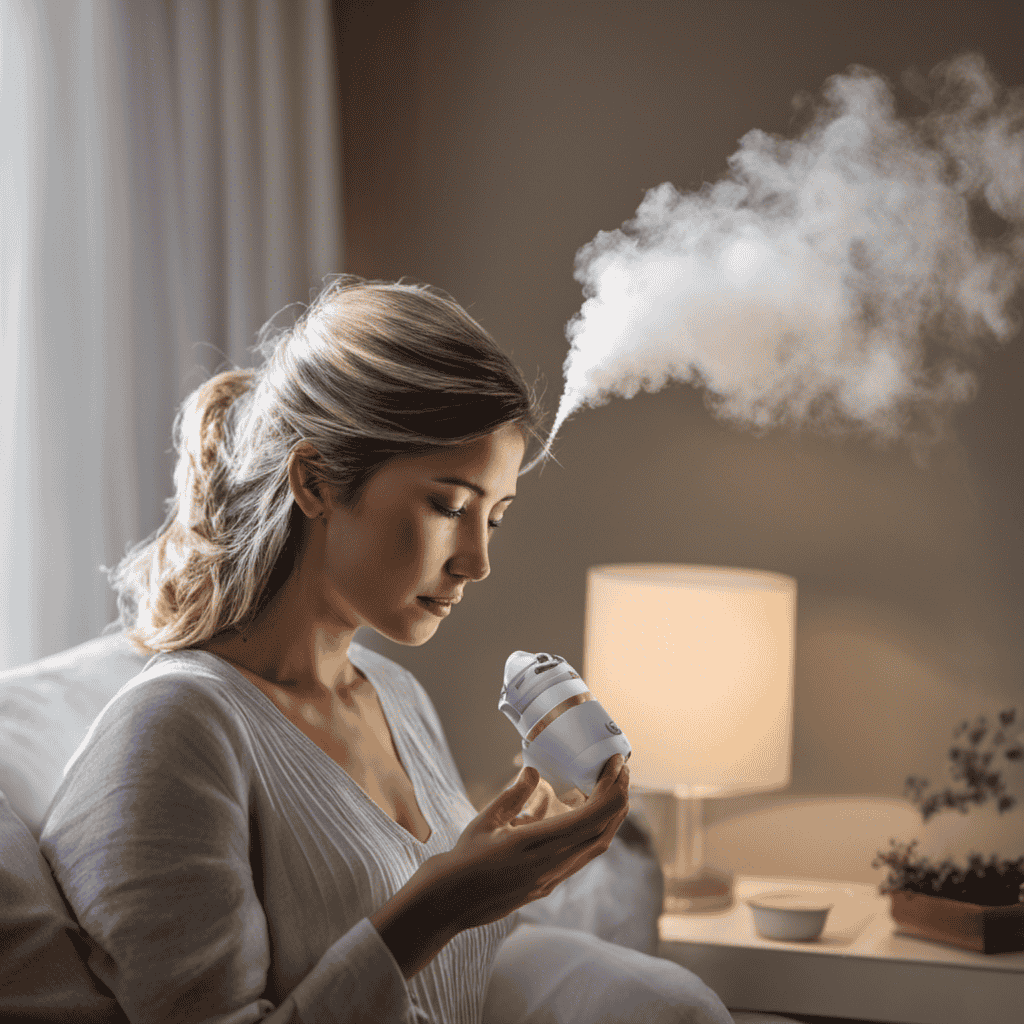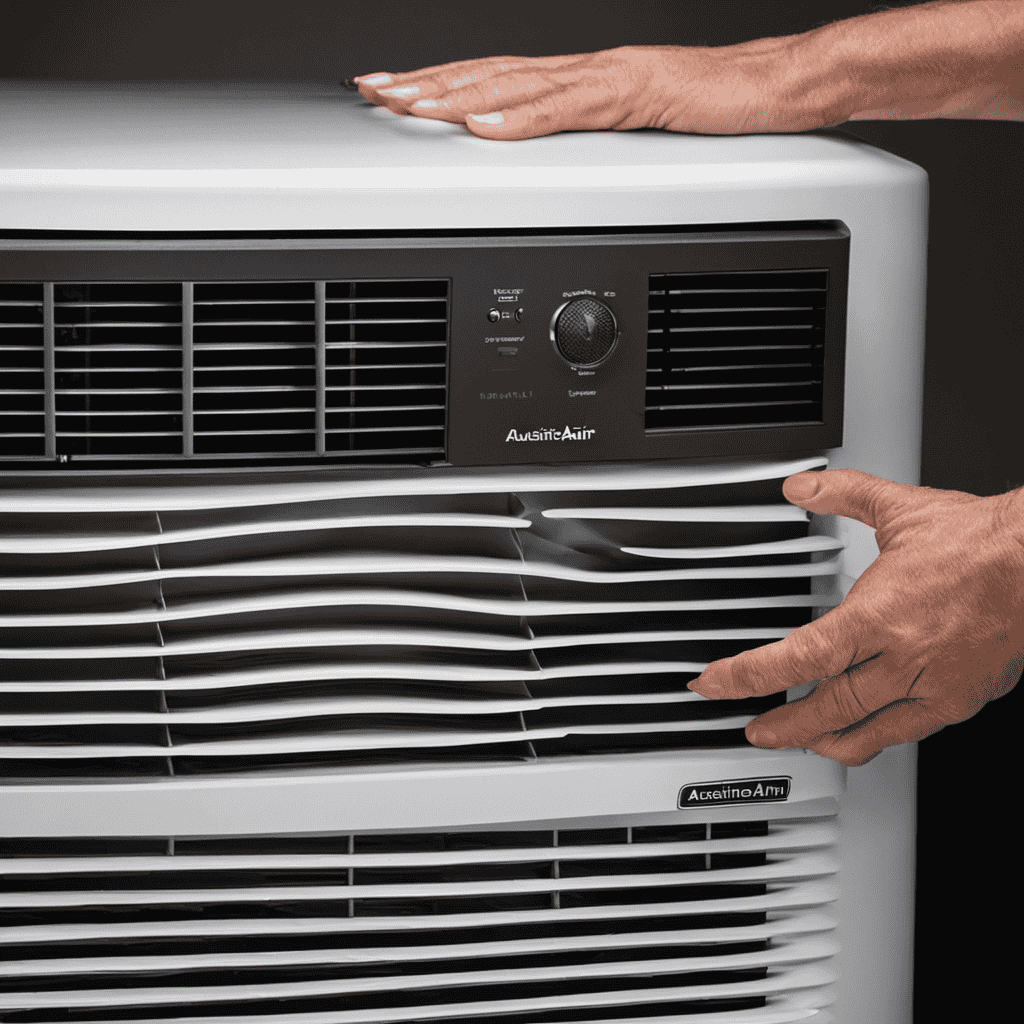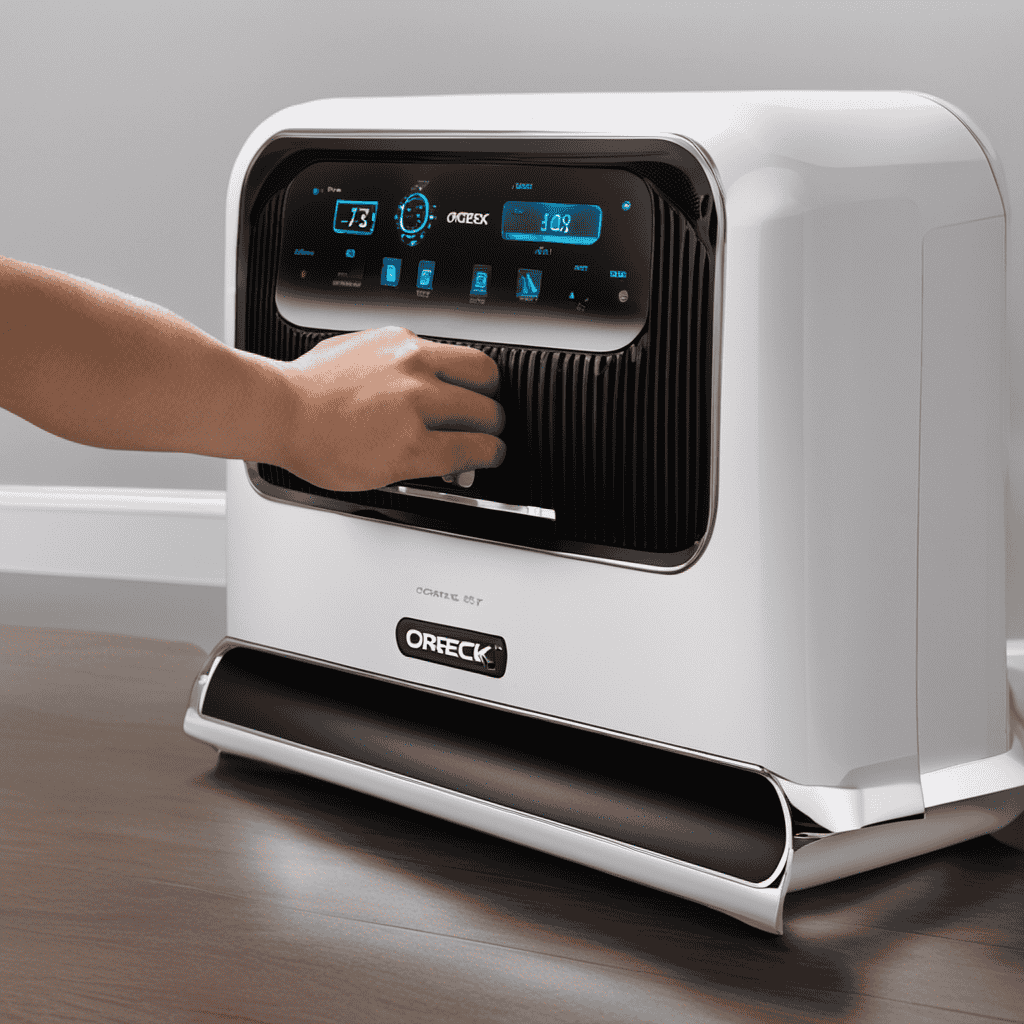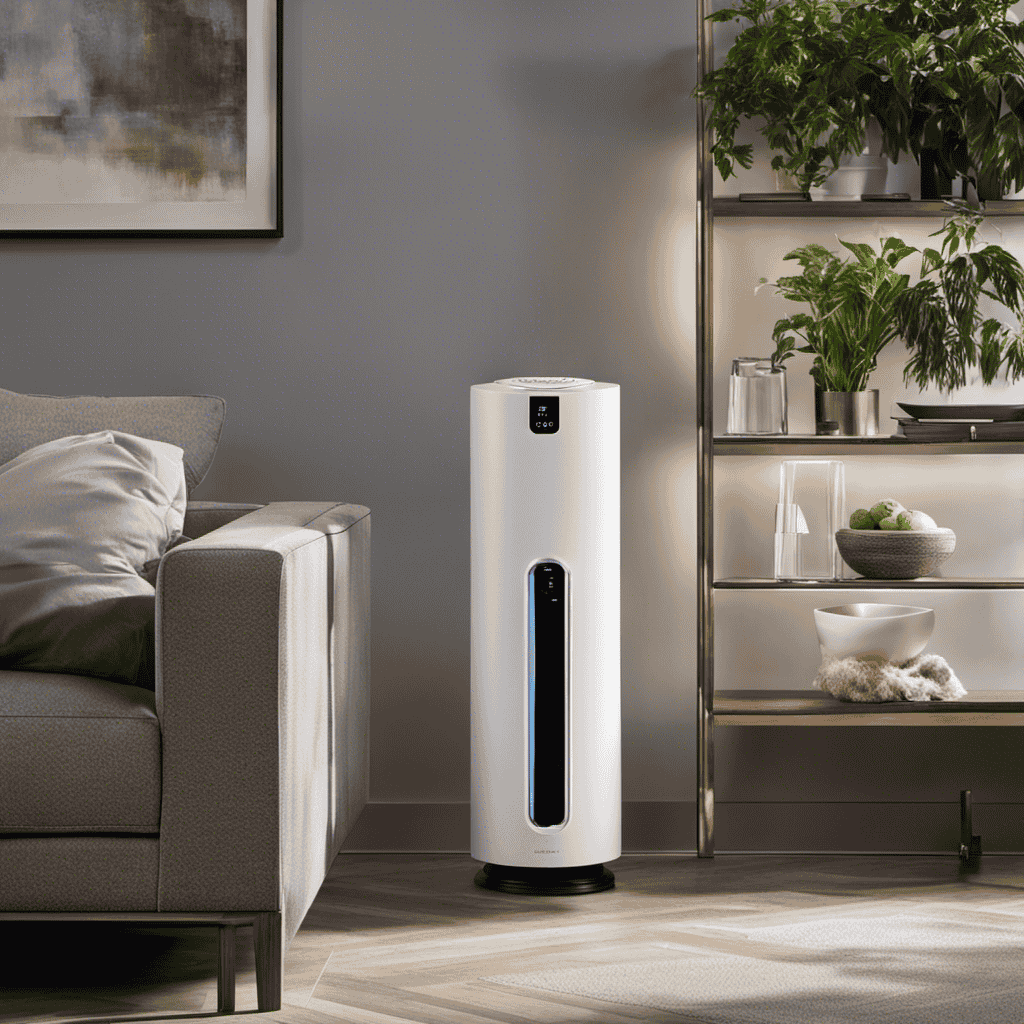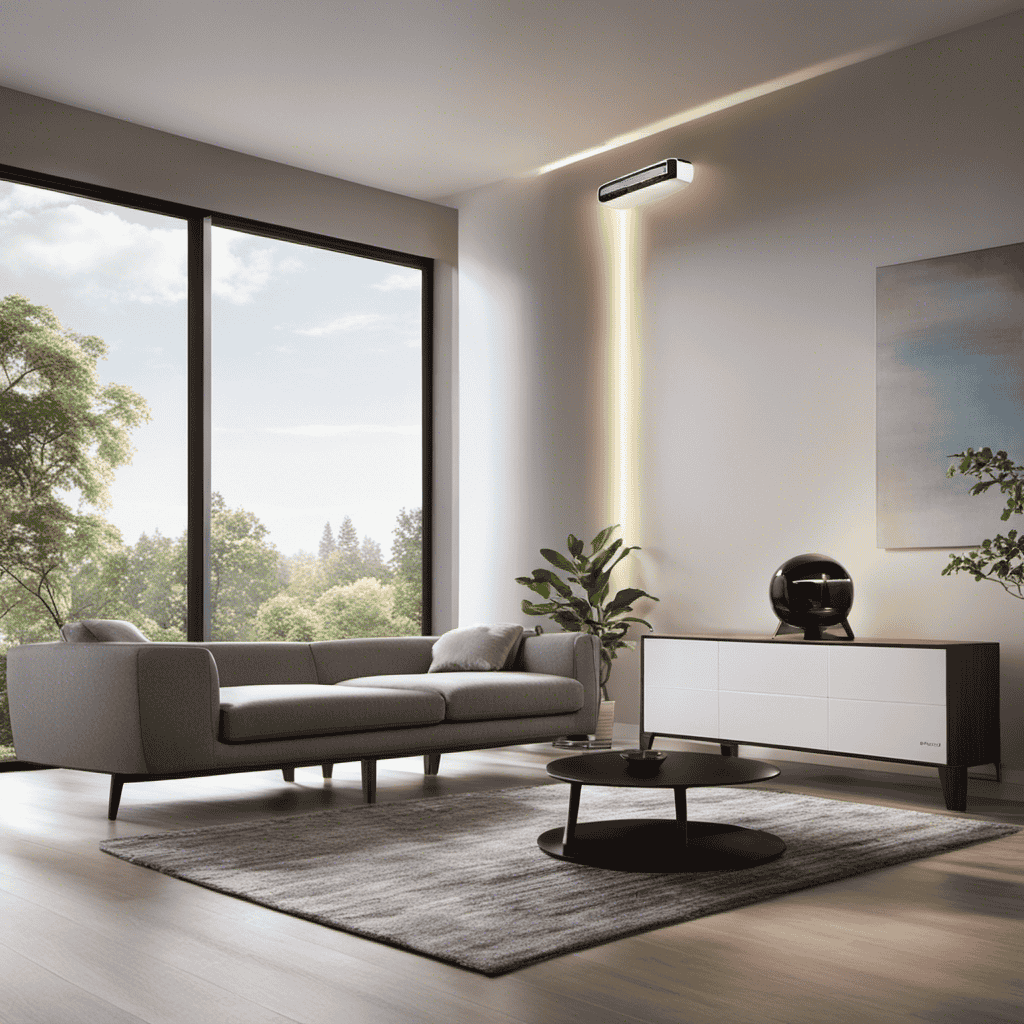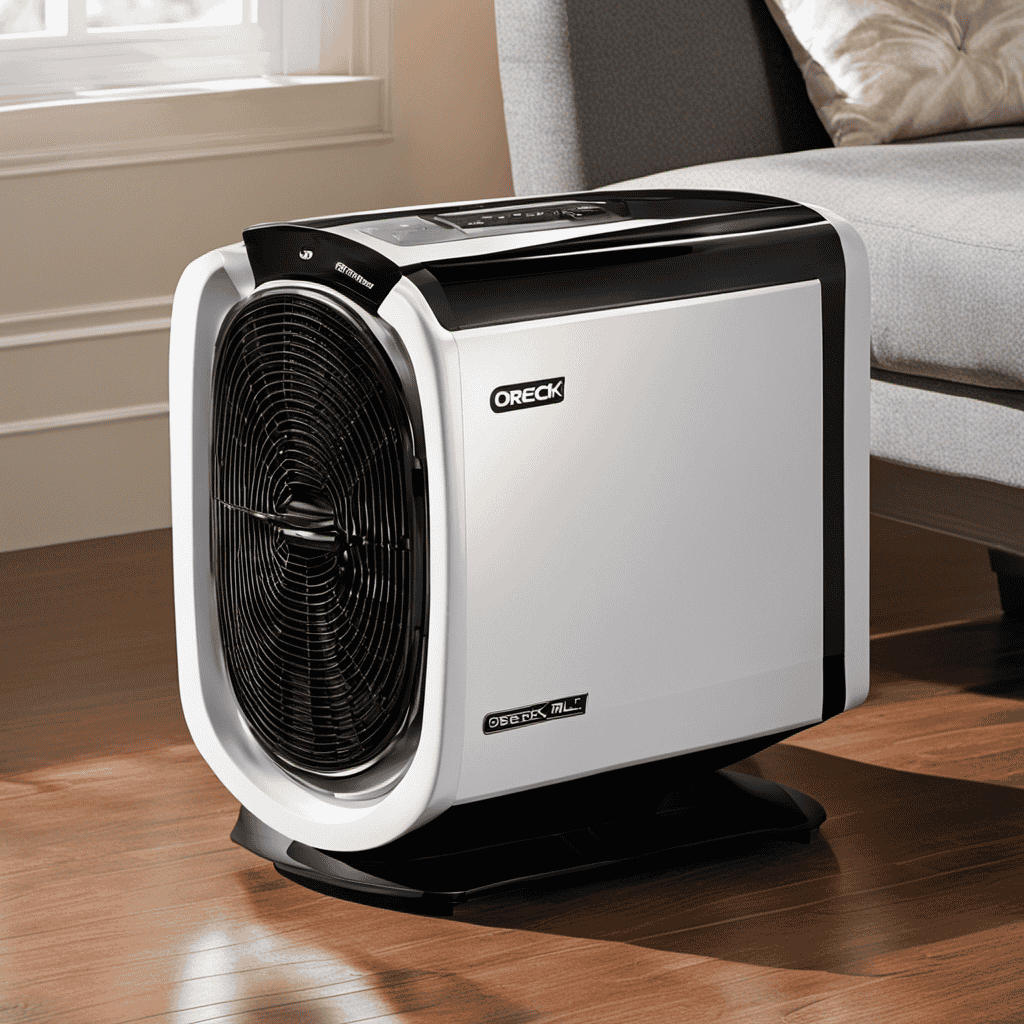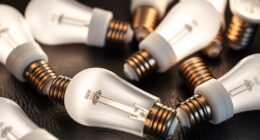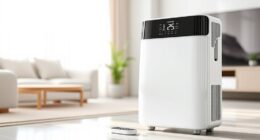I will walk you through the steps of purchasing an air purifier for individuals with allergies, providing expert recommendations and important factors to keep in mind.
As someone who has battled allergies myself, I understand the importance of finding the right air purifier to alleviate symptoms and improve indoor air quality.
In this article, we’ll delve into different types of air purifiers, evaluate their features and specifications, and help you determine the perfect fit for your space.
Let’s embark on this journey towards cleaner, allergen-free air together.
Key Takeaways
- Size of the room and the type of filter used are important factors to consider when choosing an air purifier for allergy sufferers.
- Regular maintenance and the effectiveness of HEPA filters in capturing allergens should be prioritized.
- Understanding the different types of air purifiers and their specific functions can help in selecting the right one.
- Evaluating air purifier features such as CADR rating, room coverage, noise level, and the limitations of air purifiers is necessary for making an informed decision.
Factors to Consider When Choosing an Air Purifier
When choosing an air purifier for allergy sufferers, it’s important to consider factors such as the size of the room and the type of filter it uses.
Maintenance plays a crucial role in the effectiveness of air purifiers. Regular cleaning and filter replacement ensure optimal performance and reduce the risk of allergens recirculating in the air.
Additionally, the type of filter used is vital in capturing allergens. HEPA (High-Efficiency Particulate Air) filters are highly effective in trapping microscopic particles, such as pollen, dust mites, and pet dander, which are common triggers for allergies. These filters can capture up to 99.97% of particles as small as 0.3 microns.
Therefore, when selecting an air purifier, it is essential to prioritize regular maintenance and choose one with a HEPA filter to maximize its allergy-fighting capabilities.
Understanding Different Types of Air Purifiers
To better understand the various types of air purifiers, you should familiarize yourself with their different features and functionalities. When it comes to air purifiers, two popular options are ionic air purifiers and those with HEPA filters. Ionic air purifiers work by emitting negative ions that attach to airborne particles, causing them to fall to the ground. They are known for their ability to remove odors and small particles from the air. On the other hand, air purifiers with HEPA filters are highly effective at capturing and trapping particles as small as 0.3 microns, including allergens like pollen, dust mites, and pet dander. These filters are considered the gold standard in air purification and are recommended for individuals with allergies or asthma. Here’s a comparison of the two types:
| Ionic Air Purifiers | HEPA Filters |
|---|---|
| Emit negative ions to remove particles | Capture and trap particles |
| Remove odors | Highly effective at removing allergens |
| Not as effective for capturing larger particles | Can capture particles as small as 0.3 microns |
When choosing an air purifier, consider your specific needs and the types of particles you want to remove from your indoor air. Both ionic air purifiers and those with HEPA filters have their unique benefits, so it’s important to choose the one that best suits your requirements.
Evaluating Air Purifier Features and Specifications
If you’re looking for an air purifier, evaluating the features and specifications can help you make an informed decision.
When it comes to choosing the right air purifier for your needs, there are a few key factors to consider.
Firstly, you’ll want to check the Clean Air Delivery Rate (CADR), which measures the efficiency of the purifier in removing different types of pollutants.
Additionally, pay attention to the size of the room the purifier can effectively cover, as well as the noise level produced by the device.
It’s also important to be aware of common misconceptions about air purifiers. Contrary to popular belief, air purifiers do not eliminate all pollutants or replace the need for regular cleaning.
They can, however, significantly improve indoor air quality when used in conjunction with proper maintenance, such as regularly changing filters and cleaning the unit according to the manufacturer’s instructions.
Determining the Right Size and Coverage for Your Space
Determining the right size and coverage for your space can help ensure effective air purification. When it comes to choosing the right filter for your air purifier, understanding the CADR (Clean Air Delivery Rate) rating system is crucial. The CADR rating measures how efficiently an air purifier can remove pollutants such as smoke, dust, and pollen from the air. It is important to select an air purifier with a CADR rating that matches the size of your room. To help you make an informed decision, here is a table showcasing the recommended CADR ratings for different room sizes:
| Room Size | Recommended CADR Rating |
|---|---|
| Small (up to 150 sq ft) | 100-150 |
| Medium (150-300 sq ft) | 200-300 |
| Large (300-500 sq ft) | 300-450 |
| Extra Large (500+ sq ft) | 450+ |
Choosing an air purifier with the appropriate CADR rating for your space will ensure that it can effectively purify the air and provide relief for allergy sufferers. Now, let’s move on to comparing air purifier brands and models.
Comparing Air Purifier Brands and Models
Now, let’s take a look at how different air purifier brands and models compare.
When it comes to choosing an air purifier, price range and noise level are important factors to consider. The price range of air purifiers can vary greatly depending on the brand and model. Some budget-friendly options start at around $50, while more advanced models can cost upwards of $500. It’s essential to find a balance between your budget and the features you need.
Additionally, noise level is another crucial consideration. Air purifiers typically produce some level of noise, with quieter models operating at around 20-30 decibels. Look for air purifiers with adjustable fan speeds or a sleep mode option to minimize noise disruption.
Remember to compare different brands and models to find the best air purifier that suits your specific needs and preferences.
Frequently Asked Questions
Can an Air Purifier Completely Eliminate All Allergens in the Air?
An air purifier can effectively reduce allergens in the air, but it cannot completely eliminate them. While it can capture and filter particles, some allergens may still remain.
How Often Should I Replace the Filters in My Air Purifier?
I replace my air purifier filters every 3-6 months to ensure optimal performance. The best air purifier brands recommend regular filter replacements to maintain clean air and maximize the benefits of using an air purifier.
Can Air Purifiers Help With Allergies Caused by Pet Dander?
Air purifiers can be effective in reducing pet dander, a common allergen. They filter the air, trapping microscopic particles including pet dander. Consider air purifiers with HEPA filters for optimal results.
Can Air Purifiers Remove Odors From the Air?
Yes, air purifiers can remove odors from the air. They are particularly effective in eliminating smoke and cooking smells. It is important to choose an air purifier with a strong activated carbon filter for optimal odor removal.
Are There Any Potential Health Risks Associated With Using an Air Purifier for Extended Periods of Time?
Using an air purifier for extended periods of time may have potential side effects and long-term effects on health. It is important to consider the possible risks before making a purchase.
Conclusion
After careful consideration of the factors, types, features, and specifications, I’ve come to the conclusion that purchasing an air purifier for allergy sufferers is a wise decision.
By understanding the needs of your space and comparing different brands and models, you can find the perfect purifier to combat allergens.
Remember, thorough research and evaluation are crucial in making an informed choice. So, seize the opportunity to improve your indoor air quality and say goodbye to sneezes and sniffles!
